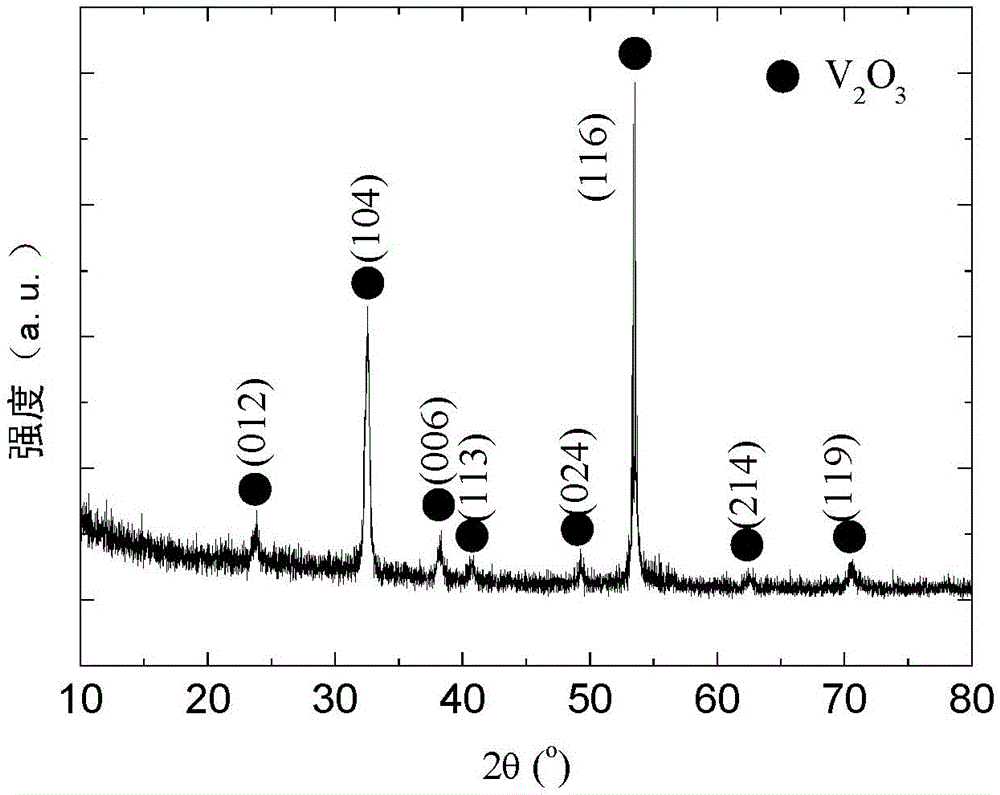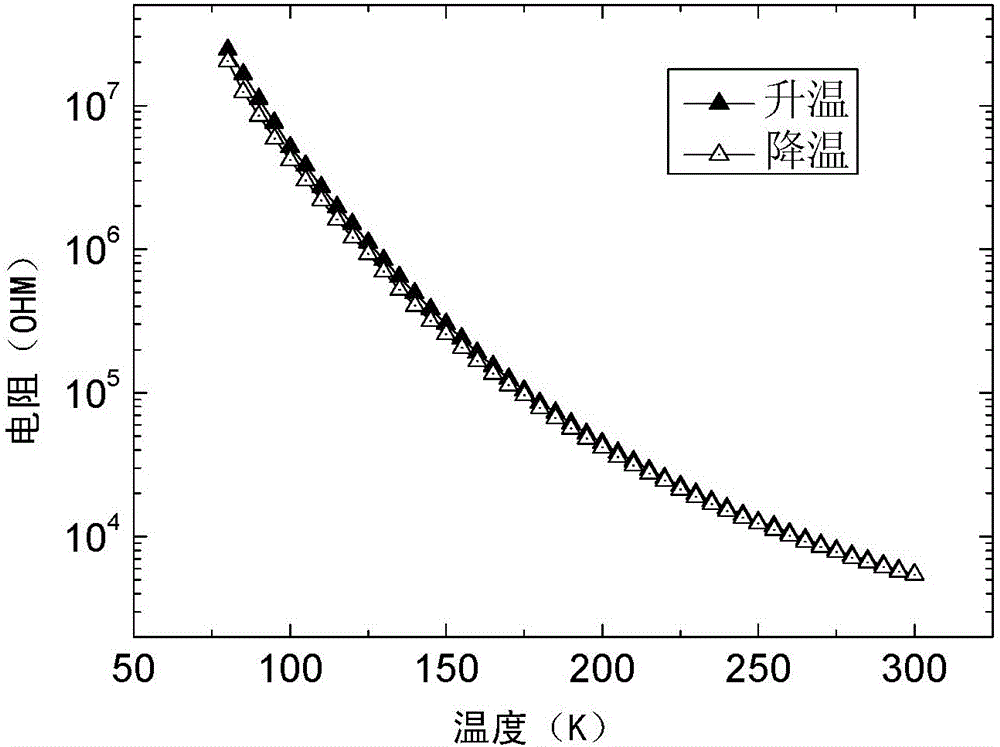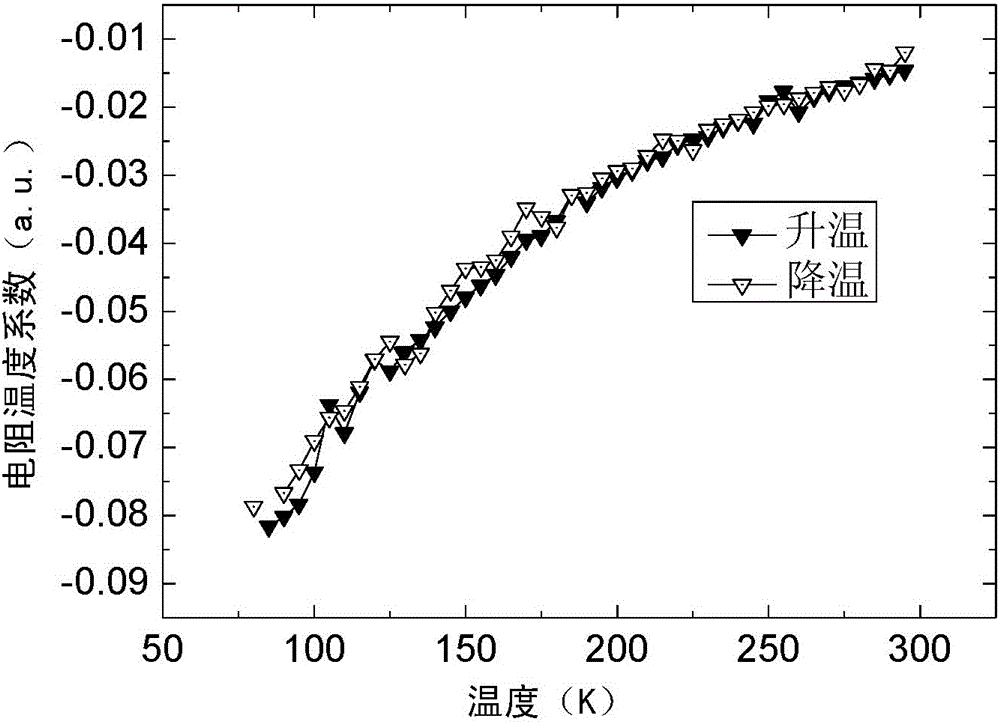A low-temperature high-resistance temperature coefficient non-hysteresis film material and its preparation method
A thin-film material and temperature coefficient technology, which is applied in metal material coating process, vacuum evaporation plating, coating, etc., can solve the problem of rare reports on the temperature coefficient of resistance of vanadium trioxide thin film, and achieve good heat-sensitive characteristics and process Simple, eliminates the effect of thermal hysteresis loops
- Summary
- Abstract
- Description
- Claims
- Application Information
AI Technical Summary
Problems solved by technology
Method used
Image
Examples
Embodiment 1
[0044] The substrate is plated with a layer of SiN x The Si sheet is used as the substrate, and the SiNx layer is mainly an insulating layer to avoid the leakage of the film in the electrical test. It is cleaned by standard ultrasonic cleaning with acetone, ethanol and deionized water. Using a multifunctional magnetron sputtering system, high-purity metal vanadium (purity: 99.99%), metal Ti (purity: 99.99%), and metal W (purity: 99.99%) are used as targets. The target diameter is 2 inches and the thickness is 5mm. , the background vacuum is 3×10 -5 Pa, the deposition temperature is 300-500°C, the Ar gas flow rate is 40 sccm, the sputtering power is 60w, 5w, 5w, the sputtering time is 150min, and the oxygen flow rate is 0.4sccm (that is, the oxygen partial pressure is 1.0 %).
[0045] X-ray diffractometer analysis (XRD) was used to test the crystalline phase of the film as figure 1 As shown, the film exhibits V 2 o 3 Pure crystalline phase, no impurity phase formation. f...
Embodiment 2
[0047] The steps of Example 1 were basically repeated, except that the sputtering powers of V, Ti, and W were 80W, 8W, and 10W, respectively, and the oxygen flow rate was 0.48 sccm, that is, the oxygen partial pressure was 1.2%. X-ray diffractometer analysis (XRD) test shows that the prepared film presents V 2 o 3 Pure crystalline phase, no impurity phase formation. From heating up to cooling down, the resistance temperature curve has no thermal hysteresis and no sudden change. In the low temperature range (80K-225K), it has a high temperature coefficient of resistance (-3% / K~-8% / K).
Embodiment 3
[0049] The steps of Example 1 were basically repeated, except that the sputtering powers of V, Ti, and W were 100 W, 10 W, and 15 W, respectively, and the oxygen flow rate was 0.6 sccm, that is, the oxygen partial pressure was 1.5%. X-ray diffractometer analysis (XRD) test shows that the prepared film presents V 2 o 3 Pure crystalline phase, no impurity phase formation. From heating up to cooling down, the resistance temperature curve has no thermal hysteresis and no sudden change. In the low temperature range (80K-225K), it has a high temperature coefficient of resistance (-3% / K~-8% / K).
PUM
| Property | Measurement | Unit |
|---|---|---|
| thickness | aaaaa | aaaaa |
| size | aaaaa | aaaaa |
Abstract
Description
Claims
Application Information
 Login to View More
Login to View More - R&D
- Intellectual Property
- Life Sciences
- Materials
- Tech Scout
- Unparalleled Data Quality
- Higher Quality Content
- 60% Fewer Hallucinations
Browse by: Latest US Patents, China's latest patents, Technical Efficacy Thesaurus, Application Domain, Technology Topic, Popular Technical Reports.
© 2025 PatSnap. All rights reserved.Legal|Privacy policy|Modern Slavery Act Transparency Statement|Sitemap|About US| Contact US: help@patsnap.com



